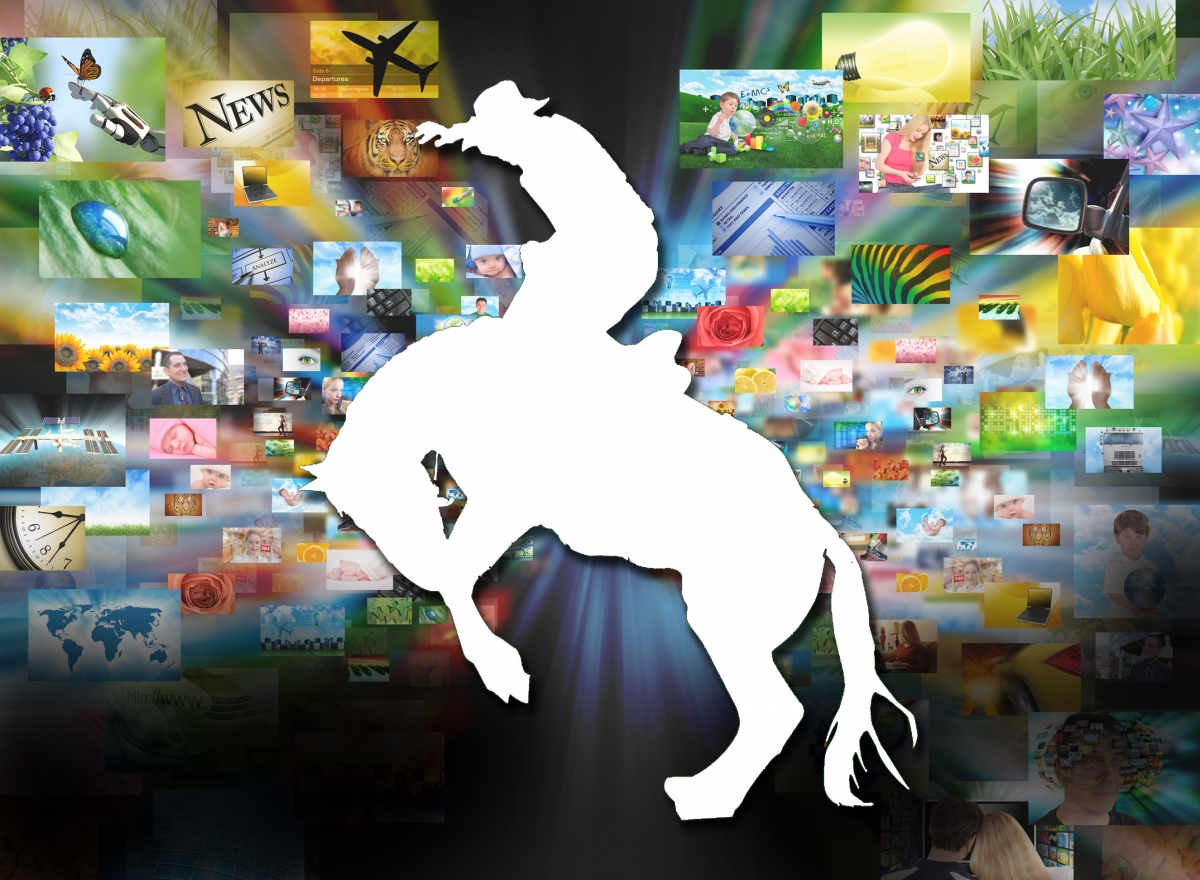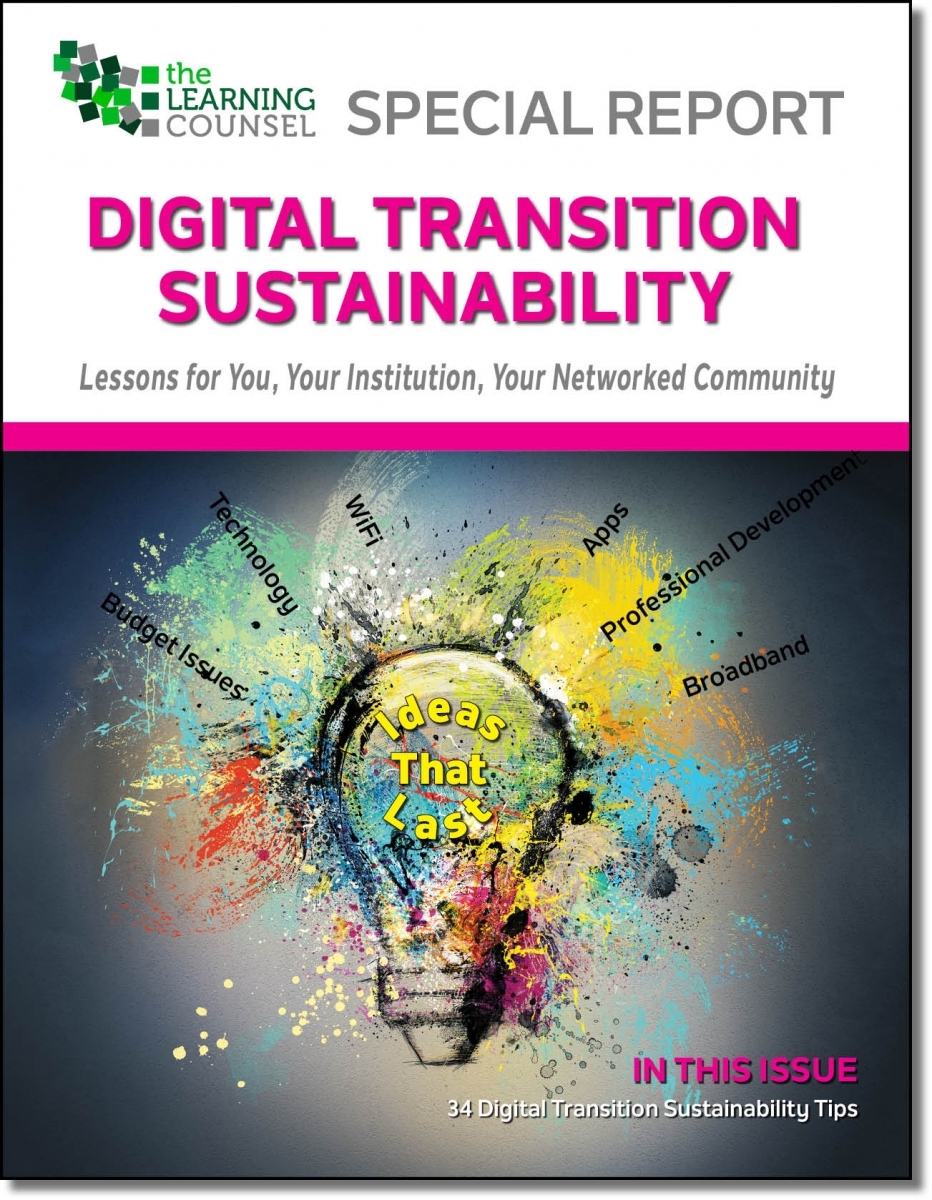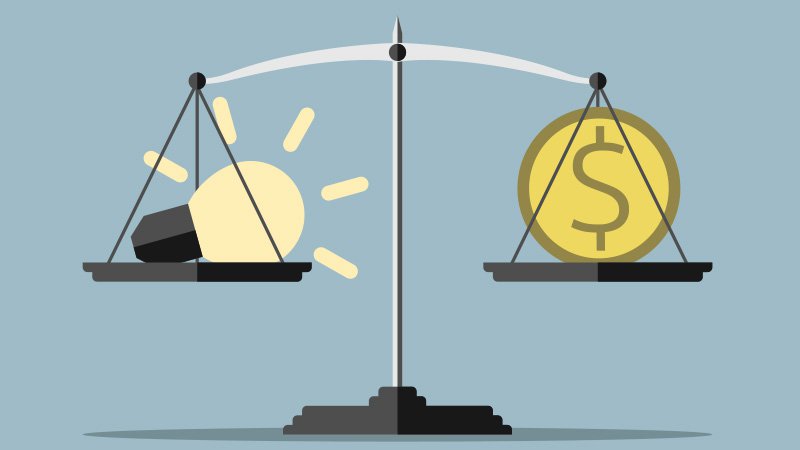Last week we shared the opening story and the first “tip” for school sustainability. Here is part two of that story, excerpted from the latest Special Report. Here we present research and context for education leaders and classroom instructors on how to shift to tech-based teaching and learning tools and software, and doing it in a sustainable manner. We begin with Tip #2 and take you through to Tip #10.
TIP #2. Shift Budgets
According to the Learning Counsel’s 2016 Digital Curriculum Strategy Survey, billions in spend has yet to shift out of paper textbooks into digital – 80% of those budgets still haven’t shifted. Even so, total spend on books is down by billions in the K12 sector. So where did the money go? Probably some to hardware and curriculum software.
The fastest way to sustainability is to decide to go to a full coverage model of digital, stop trying to keep one foot still in paper. The same Survey said that 80% of schools are trying to get to full coverage digital. They are hamstrung by not having the budget to actually buy digital resources. While there will always be some paper resources in schools, a model that uses mostly digital has the potential to create great savings.
Shift your budgets, and demand digital to be sustainable.
TIP #3. Be Tom Sawyer
Get others to do the work. In the Adventures of Tom Sawyer by Mark Twain, an 1876 novel about a young boy growing up along the Mississippi River, Tom Sawyer skips school to swim and is made to whitewash (paint) the fence the next day as punishment. He cleverly persuades his friends to trade him small treasures for the privilege of doing his work.
Schools can use a ton of outside services to do their work, and along the way get a lot of side benefits Services like TurnItIn provide a plagiarism checker and help improve student writing. Scribesense will auto-grade handwritten assignments, saving a huge amount of teacher time. Yup, a mobile app, allows students to take a picture of a math problem and get help figuring out how to solve it from live teachers. Presence Learning provides live online speech therapy and other services for special needs students, saving many schools from the high price of special needs teachers in unreachable places. Proximity Learning is a fully accredited online education provider with many courses built around live class sessions delivered via web-conferencing. Their live instruction model mirror the experience of a traditional brick and mortar classroom setting, but is conducted entirely online. As such, they are a solver for many school’s credentialed teacher crisis, allowing non-credentialed staff to step in and supervise while a live teacher conducts instruction over the internet. Teachers can stretch their administrative time by sharing with other teachers in far off places via collaboration sites like ePals which offers a way for groups of students  around the world to be matched up and paired with other classrooms. This allows one class to join another class’ existing project-based learning plans and share more broadly. Fuel Education, Florida Virtual School (FLVS), and others offer a full coverage model of courses that can be plugged in to any part of a school’s curriculum operations. Companies like eDynamic Learning offer a whole array of electives courses. Barb Meidinger, Principal of the North Dakota Center for Distance Education, mentioned at our Minneapolis, MN event on March 21st, 2017, that some of her schools have students who are completing as many as sixty of those electives before graduating, getting exposed to numerous potential careers that enliven their other studies while they are taking them. That opportunity is one they would never have gotten in remote areas with few teachers if it wasn’t for that online access.
around the world to be matched up and paired with other classrooms. This allows one class to join another class’ existing project-based learning plans and share more broadly. Fuel Education, Florida Virtual School (FLVS), and others offer a full coverage model of courses that can be plugged in to any part of a school’s curriculum operations. Companies like eDynamic Learning offer a whole array of electives courses. Barb Meidinger, Principal of the North Dakota Center for Distance Education, mentioned at our Minneapolis, MN event on March 21st, 2017, that some of her schools have students who are completing as many as sixty of those electives before graduating, getting exposed to numerous potential careers that enliven their other studies while they are taking them. That opportunity is one they would never have gotten in remote areas with few teachers if it wasn’t for that online access.
There are other creative ways to enlist help and support, even sell the right to give that support or duty to become more financially sustainable. When schools and teachers lean on others to “whitewash the fence,” their gain is greater sustainability for the institution and the learners.
TIP #4. Watch the Triple Bottom Line
Mindfulness of the “Triple Bottom Line,” the social, environmental and economic impacts of your operations, are considered the three pillars of sustainability in business. It’s easy to just worry about the financial bottom-line, but being truly sustainable requires a wider lens. Both being socially mindful and environmentally mindful require you to survey the general area and find out what is really needed and wanted for interactions and “being green” sorts of impacts.
Being social, being part of a broader community locally and globally are positive activities for the institution to broadcast. With technology, this means programs for recycling electronic waste, repurposing old computers with new software like Neverware to make them behave like Chromebooks, using repair and rebuilding services for devices, and buying insurance coverage and security software from companies like Symantec so there is less risk of ransomware. Your own students can run an internal repair shop for extra credit. Your school can also earn income from recycling programs such as those discussed by Waste Management.
Being economically sustainable, interestingly, is more than just spending as little as possible or getting the best deals. It’s a responsibility for outcomes for the learners and for the operations of the institution within the context of its community. This is the new “responsive” school.
TIP #5. Stakeholder Engagement
Karla Burkholder, the Director of Instructional Technology for Schertz Cibolo Universal City ISD, at the Digital Curriculum Sustainability Discussion in San Antonio, Texas on January 12, 2017, mentioned that one of their most significant moves was getting all the stakeholders from every department together into one big budget meeting. She said she arrived with a huge ask, only to learn that their facilities staff had real concerns about air-conditioning in some buildings. It was then that she realized that she would willingly give up some of her technology to make sure “it didn’t melt” during extremely hot weather.
Having everyone in agreement is a smart sustainability move because agreement creates a coordinated flow of action. Not knowing the “why” of decisions leaves people with only their own separated view of things, and builds resentment. These amount to a general disagreement and stops the flow of effort being merrily coordinated by all.
TIP #6. Embed Change as a Constant
Schools and Districts have a long-running habit of over-complicating the introduction of a new project or tech program. Part of this is that it is so exciting, and the staff in charge can get rather important over the whole thing. This, if it gets a little too pretentious or authoritarian, is a negative set-up. Teachers are “called in to training” and the over-complexity of it all tends to cause resistance. It is also sending an unspoken message that you must be coddled and that all change will be accompanied by training.
It’s time now to declare that schools and teaching is in the war-zone of going digital for real. An ever-readiness and constant alertness to change is required. Simple announcements, online training options, and expectations of compliance will embed change as a constant. That’s the recipe for survival in the current Age. When doing formal training, let it be hands on discovery, self-driven for the most part and highly social. Let it be fun to change.
TIP #7. Set a Systems Anchor
Being sustainable in the current economy means a deep reliance on technology. All those spreadsheets and work-by-hand are costing staff resources (translation: money and time). There’s probably an App for that. Additionally, there is probably a technology system for that, which requires a change in behavior by the organization to maximize efficiency. A first step for coming to grips with the digital content universe is to take an inventory. Knowstory.com is a new social media site to let you do this where everyone in your school or district takes part and shares the work load.
TIP #8. Strat Plan
Get real with a precision strategic plan or “strat” plan. This means know how to strat plan like the pros, with goal setting, creating a flexible strategy that once you run the tactical programs out to the troops, their projects descend into the sub-parts of execution all the way down into daily battle plans or lessons. You get feedback from that to reset strategy as needed. The syncing of the parts and the ability to execute vision means you wrote a good strat plan. If it’s just flowery language in a binder somewhere on a shelf, well, that doesn’t cut it to be sustainable. Real strat plans today also start with a view of running the organization, and learning, via technology to the degree possible. Ask the Learning Counsel about a lesson in real strategic planning for a full digital transition.
TIP #9. Define Mechanisms for Execution
Being sustainable means having confidence orders will be executed. When managing people and disparate groups, one can expect a non-uniform response, questions, and requests for help. New coaching platforms like Edthena or SWIVL, or using any existing Learning Management System to deliver a refined program of steps like lesson plans, can help by offering a way that is universally accessible to manage the execution of change routinely.
TIP #10. Tame Curriculum
The curriculum digital universe is like the Wild West, with thousands of companies and millions of pieces all over the internet. One of the important things to learn first is to distinguish between the discrete, atomized piece like a single PDF, video link, or word document; and digital professional learning objects that may be full courseware with intelligent learning engines and embedded assessments. The difference is in the work to use them. Consider your overall mix and burden on teachers to be sustainable and provide the highest quality of personalization. See our earlier Special Report with the “71 Characteristics of Digital Curriculum” and “Tactics” which includes how to evaluate digital content.
 Download the complete special report on Digital Transition Sustainability.
Download the complete special report on Digital Transition Sustainability.











